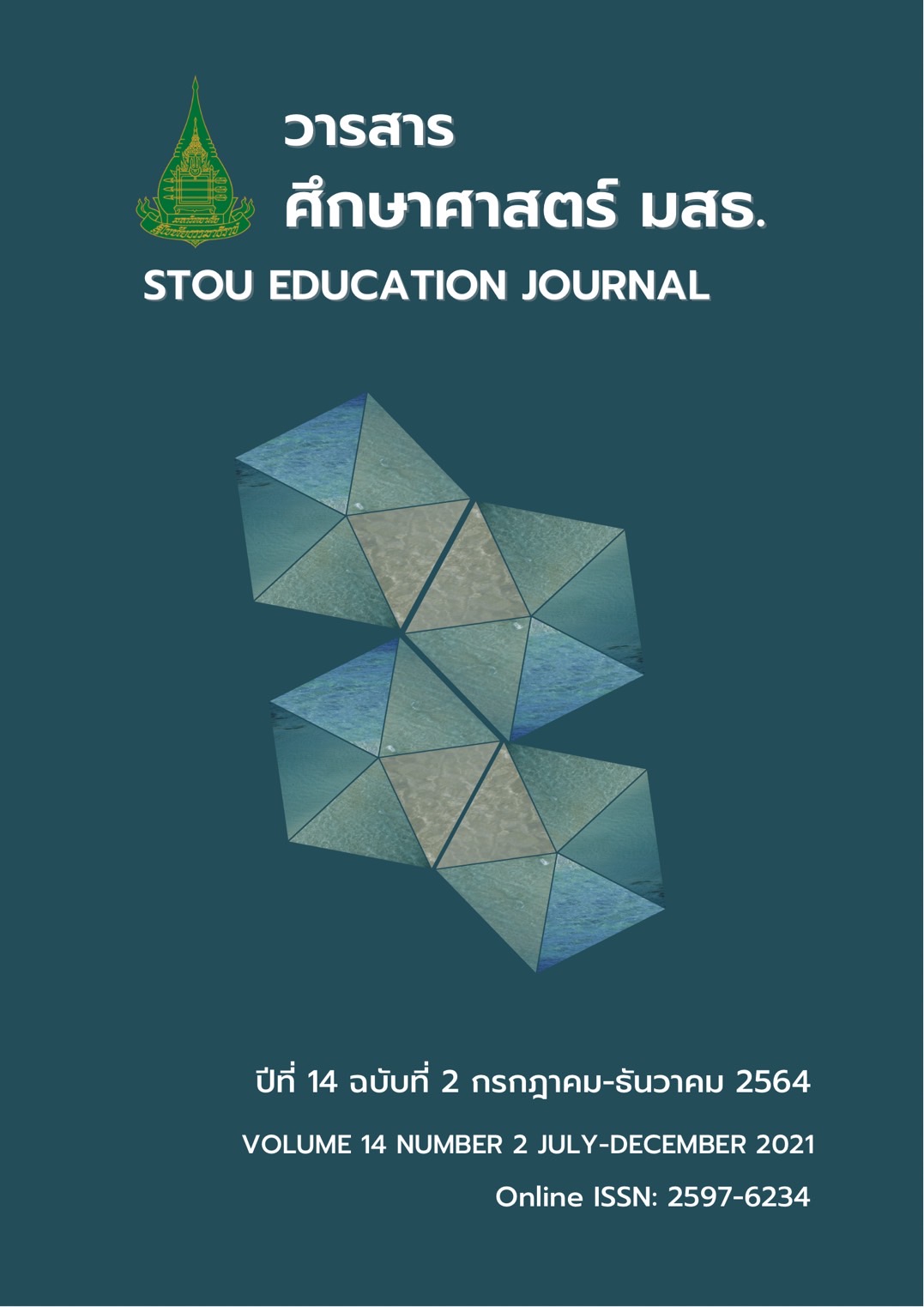The Development of Electronic Programmed Instruction to Enhance Thai Language Learning Achievement of Students with Visual Impairment
Main Article Content
Abstract
This research aimed to 1) investigate fundamental information and needs for an electronic programmed instruction module to help visually impaired students improve their Thai language learning achievement; 2) develop an electronic programmed instruction module to enhance Thai language learning achievement of students with visual impairments; 3) compare Thai language learning achievement of visually impaired students before and after learning with the developed electronic programmed instruction module; and 4) study learning retention of the visually impaired students.The sample comprised 20 grade 6 visually impaired students in Bangkok School for the Blind in the first semester of the academic year 2018, obtained by simple random sampling. The research instruments included 1) a questionnaire;2) an interview form; 3) an electronic programmed instruction module of a Thai language course for grade 6 students; and 3) a Thai language learning achievement test. The data were analyze by using the percentage, mean, standard deviation, t-test, and content analysis. The findings were as follows: 1) the study of fundamental information and needs revealed that an electronic programmed instruction module was important and necessary for visually impaired students. It helped individual students learn and attain their full potential. The most needed electronic programmed instruction module for students and teachers was the one with audio description or speech synthesis which enabled the students to study individually. 2) The electronic programmed instruction module was efficient at 77.00/80.67, which was higher than the set efficiency criterion of 75/75. 3) the post-Thai language learning achievement of the students was significantly higher than their pre-learning counterpart achievement at the .01 level of statistical significance. 4) After 14 days of learning with the electronic programmed instruction module, the students learning retention was higher than 70% criteria at the .01 level of statistical significance.
Article Details
References
กมลา สุริยพงศ์ประไพ. (2546). การพัฒนาบทเรียนสำเร็จรูป เรื่อง ปาเลสไตน์ มาตุภูมิของพระเยซูเจ้า สำหรับนักเรียนมัธยมศึกษาปีที่ 2. (วิทยานิพนธ์ปริญญาศึกษาศาสตรมหาบัณฑิต ไม่ได้ตีพิมพ์) มหาวิทยาลัยศิลปากร,กรุงเทพฯ.
ชัยญา วงศ์สกุล. (2542) การเปรียบเทียบผลสัมฤทธิ์ทางการเรียนวิชา ส 503 สังคมศึกษา เรื่องภูมิศาสตร์กายภาพของประเทศไทย ของนักเรียนชั้นมัธยมศึกษาปีที่ 5 ที่ได้รับการสอนโดยบทเรียนสำเร็จรูปและตามแนวคู่มือครู . (วิทยานิพนธ์ปริญญาศึกษาศาสตรมหาบัณฑิต ไม่ได้ตีพิมพ์) มหาวิทยาลัยศิลปากร,กรุงเทพฯ.
ชัยยงค์ พรหมวงศ์. (2556). การทดสอบประสิทธิภาพสื่อหรือชุดการสอน. วารสารศิลปากรศึกษาศาสตร์, 5(3), 7-20.
ถวัลย์ มาศจรัส. (2548). บทเรียนโปรแกรมกลุ่มสาระการเรียนรู้ภาษาไทย. กรุงเทพมหานคร: ธารอักษร.
ทิศนา แขมมณี. (2547).ศาสตร์การสอน (พิมพ์ครั้งที่ 3) แก้ไขเพิ่มเติม. กรุงเทพมหานคร: สำนักพิมพ์แห่งจุฬาลงกรณ์มหาวิทยาลัย.
ธีระชัย ปูรณโชติ. (2539). การสร้างบทเรียนสำเร็จรูป เส้นทางสู่อาจารย์ 3 (พิมพ์ครั้งที่ 3). กรุงเทพมหานคร: โรงพิมพ์จุฬาลงกรณ์มหาวิทยาลัย.
วันทนีย์ พันธชาติ. (2552). การพัฒนาศักยภาพเด็กที่มีปัญหาการเรียนรู้โดยเทคโนโลยีสิ่งอํานวยความสะดวก. สารเนคเทค,16(84), 4-5.
สานิตย์ กายาผาด. (2547). เทคโนโลยีสารสนเทศเพื่อชีวิต. กรุงเทพมหานคร : เธิร์ดเวฟ เอ็ดดูเคชัน.
สุรสิทธิ์ วรรณไกรโรจน์. (2557). ความหมายของการเรียนรู้ผ่านออนไลน์(e-learning). สืบค้นจากhttp://www.thai2learn.com.
สุนันทา สุนทรประเสริฐ. (2544). การผลิตนวัตกรรมการเรียนการสอนเล่ม 2 การสร้างแบบฝึก. ม.ป.ท.
สุรางค์ โค้วตระกูล. (2550). จิตวิทยาการศึกษา (พิมพ์ครั้งที่ 7). กรุงเทพมหานคร: จุฬาลงกรณ์มหาวิทยาลัย.
สุวิทย์ มูลคำ และ อรทัย มลูคำ. (2544). เรียนรู้สู่ครูมืออาชีพ (พิมพ์ครั้งที่ 6). กรุงเทพมหานคร:ดวงกมลสมัย.
Driver, R., & Bell, B. (1986). Students' thinking and the learning of science: A constructivist view. School Science Review, 67, 443-456.


